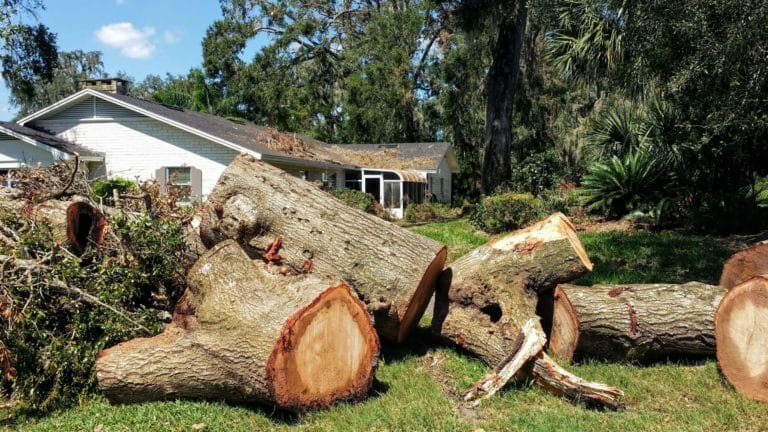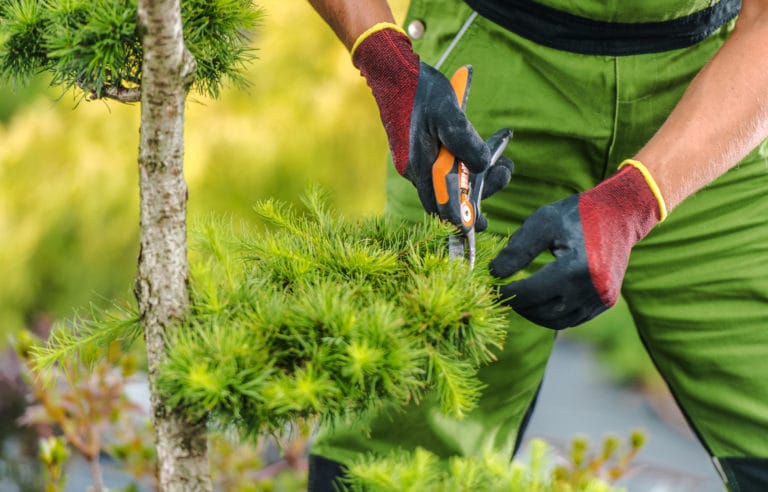Tree removal is standard for various reasons, such as disease, old age, or potential hazards. However, once a tree is removed, many wonder if it is possible to plant another tree in the same spot. In this blog post, we will explore the feasibility of planting a tree in an area where one was previously removed and discuss the factors to consider before undertaking such a project. We will also delve into the benefits of planting a new tree in a removed area, provide tips for successful planting, and highlight potential dangers that should be considered. Let’s explore the world of tree planting after removal!
Understanding Tree Removal
Before discussing planting a tree in an area where one was removed, it is essential to understand the process of tree removal. Tree removal involves cutting down a tree to its stump and removing the remaining roots from the ground. Professional tree services companies like Green Leaf Zone in Southern California typically carry out this process. These companies have the necessary expertise, equipment, and safety protocols to remove the tree safely and efficiently.
Factors to Consider Before Planting a Tree
1. Soil Conditions
The health and growth of a tree heavily depend on the soil condition in which it is planted. Before planting a tree in an area where one was removed, it is crucial to assess the soil conditions. Factors such as soil pH, texture, drainage, and nutrient content should be considered. Soil testing can provide valuable insights into the soil’s composition and help determine whether any amendments or treatments are necessary to ensure the new tree’s success.
2. Available Space
Another crucial factor to consider is the available space in the area where the tree was previously removed. Trees require adequate space for their roots to grow and expand. If the space is limited, it may affect the new tree’s growth and cause issues in the long run. Considering the tree’s mature size and planting it with sufficient space for root development is essential for its overall health and stability.
3. Proximity to Structures
When planting a tree, it is crucial to consider its proximity to nearby structures, such as buildings, fences, or underground utilities. The tree’s branches and roots can potentially cause damage to structures if planted too close. Any potential interference with utility lines or underground pipes should be carefully assessed to prevent future problems.
4. Sunlight Exposure
Another crucial factor to consider is the amount of sunlight the area receives. Trees require adequate sunlight for photosynthesis and healthy growth. Before planting a tree in a removed area, assess its exposure to sunlight. If the area is shaded or receives limited sunlight, choosing a tree species that thrive in such conditions may be necessary.
5. Maintenance Requirements
Every tree has different maintenance requirements, including pruning, watering, and fertilizing. Before planting a tree, it is essential to research and understand the specific maintenance needs of the chosen species. Consider whether you can provide the necessary care to ensure the tree’s health and longevity.
Benefits of Planting a Tree After Removal
Planting a new tree in an area where one was removed offers several benefits. First, it helps maintain the landscape’s aesthetics by filling the void left by the removed tree. Trees also provide numerous environmental benefits, such as improving air quality, reducing erosion, and providing shade. Moreover, planting a new tree contributes to the ecosystem’s overall health by providing a habitat for birds, insects, and other wildlife.
Tips for Planting a Tree in a Removed Area
1. Choosing the Right Tree Species
When planting a tree in an area where one was removed, it is necessary to select the right tree species that is suitable for the specific conditions of the site, such as soil type, sunlight exposure, and available space. Consider consulting with a professional arborist or nursery expert to determine the best tree species for the location.
2. Preparing the Soil for Planting
Proper soil preparation is crucial for successfully establishing a newly planted tree. Clear the area of any remaining tree roots, rocks, or debris. Loosen the soil and amend it if necessary based on the soil test results. This will create a favorable environment for the new tree’s roots to establish and grow.
3. Proper Planting Techniques
When planting the tree, ensure that the hole is wide enough to accommodate the root ball and deep enough for the tree to sit at the same level as in the nursery container. Avoid planting the tree too deep as it can lead to root suffocation. Backfill the hole with soil, tamp it down gently to remove any air pockets, and water the tree thoroughly.
4. Watering and Mulching Tips
Watering is essential to help the new tree establish its roots. Water the tree regularly, ensuring the soil remains moist but not waterlogged. Applying a layer of mulch around the tree’s base helps retain moisture, suppresses weed growth, and regulates soil temperature. However, be cautious not to pile mulch against the tree trunk as it can lead to root rot.
5. Caring for the Newly Planted Tree
After planting the tree, it is important to continue caring for it to ensure its long-term health. Regularly monitor the tree for signs of stress or disease. Prune any dead or damaged branches as needed. Follow a consistent watering schedule, especially during dry periods. Appropriate care will help the tree establish and thrive in its new environment.
Potential Dangers of Planting a Tree in a Removed Area
While planting a tree in a removed area can be rewarding, potential dangers should be considered. One significant danger is the potential for disease transfer from the previously removed tree to the new tree. Some diseases can remain in the soil and infect a new tree. Additionally, suppose the previous tree was removed due to structural issues, such as weak root systems or soil instability. In that case, these issues may still exist in the area and pose a risk to the newly planted tree.
Common Signs to Look for When Considering Planting a Tree
1. Assessing the Health of the Surrounding Trees
Before planting a tree in a removed area, assess the health of the surrounding trees. Signs of disease, pests, or decline may indicate the area unsuitable for planting a new tree. It is crucial to ensure that the new tree will not be affected by the same issues that led to the removal of the previous tree.
2. Checking for Underground Utilities
Before planting a tree, it is essential to check for underground utilities in the area, such as water pipes or electrical lines. Planting a tree without considering the location of these utilities can result in costly damages and potential safety hazards. Contact the appropriate utility companies to locate and mark any underground utilities.
3. Considering Potential Interference with Infrastructure
When planting a tree, consider the potential interference with infrastructure such as sidewalks, driveways, and foundations. The roots of some tree species can damage these structures over time. Plant the new tree at a safe distance from any existing infrastructure to avoid costly repairs in the future.
4. Evaluating the Soil Quality
Assessing the soil quality is essential before planting a new tree. Soil that is contaminated, compacted, or lacks essential nutrients may hinder the tree’s growth and health. If the soil quality is poor, consider improving it through soil amendments or choosing a tree species that can thrive in the existing conditions.
5. Determining Adequate Space for Root Growth
Ensure that the area where the tree was removed can provide adequate space for the new tree’s root growth. The roots of a tree need room to spread out and establish themselves. Insufficient space can lead to root competition and inhibit the tree’s growth and development.
Conclusion
Planting a tree in an area where one was previously removed is indeed possible, but it requires careful consideration of various factors. Assessing soil conditions, available space, proximity to structures, sunlight exposure, and maintenance requirements are crucial steps to ensure the success of the newly planted tree. By following proper planting techniques, providing adequate care, and addressing potential dangers, you can enjoy the benefits of a new tree while contributing to the beauty and health of the environment.


